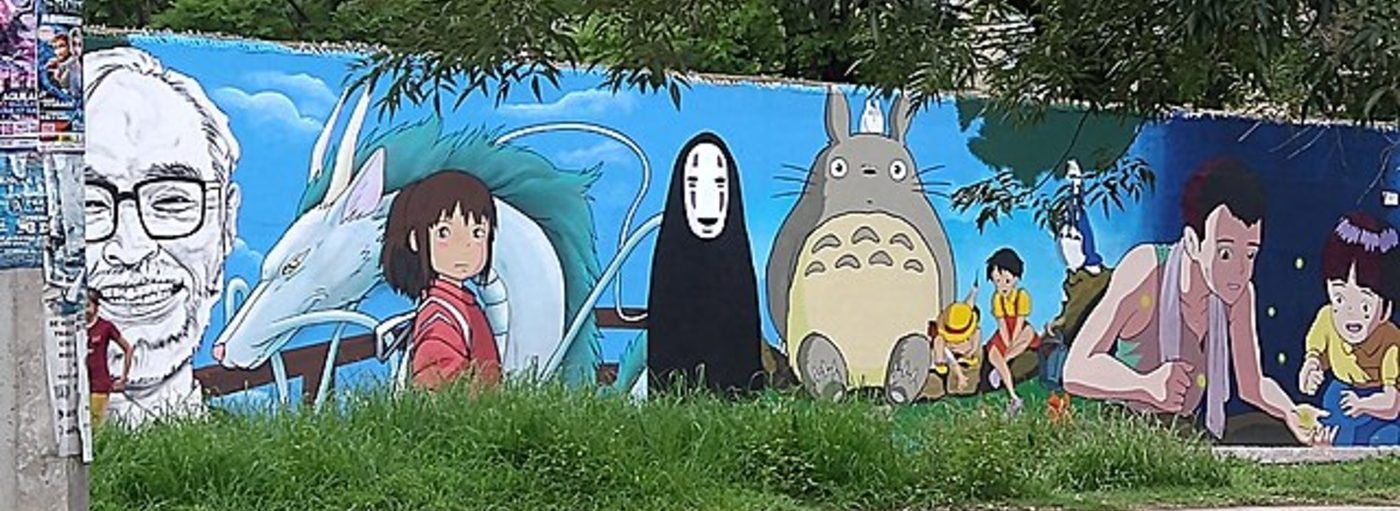Art and Motion: Why is animation so good at storytelling?
Animation has long been a deeply underappreciated art form, often written off as only good for the creation of shallow, meaningless children’s media. While much animation is perfect for young audiences, it is a skilled art form and has given life to many beloved stories that appeal to children and adults alike. In recent years, animated films have increasingly received the recognition and appreciation that they deserve, with many studios becoming the object of much critical and artistic commendation due to the distinctive art styles that they have developed to tell original and moving stories.
The animation style of Studio Ghibli is easily recognisable, fairly consistent across their many decades of film production, and perfect for telling the heartwarming stories that the studio is so well-known for.
One such company is the internationally renowned Studio Ghibli, a Japanese animation studio founded in 1985 by Hayao Miyazaki, Isao Takahata, and Toshio Suzuki. Since then, the studio has produced many animated films that are well-loved by audiences around the world, from the 1988 classic My Neighbour Totoro to their most recent film, The Boy and the Heron (2023). The animation style of Studio Ghibli is easily recognisable, fairly consistent across their many decades of film production, and perfect for telling the heartwarming stories that the studio is so well-known for.
The Ghibli film that has always held a special place in my heart is Ponyo, the product of Miyazaki’s wish to make a story aimed towards children. This 2008 film tells the story of Ponyo, a magical goldfish who wishes to become a human after being washed ashore in a small Japanese port town and meeting a boy named Sosuke. As well as creating a touching story, in the making of Ponyo, Miyazaki also set out to exhibit the advantages of traditional animation over any other art style, stating in the documentary miniseries 10 Years with Hayao Miyazaki: “Drawing on paper is the root of animation. I think I’ll go back to that”.
The original concept art for the characters and backdrop were completed in watercolour paints, and the finished film’s backgrounds were individually hand-drawn using brightly coloured pastels to appear like a picture book and give a sense of the world being viewed with the innocence and joy of a young child’s perspective. This commitment to traditional animation was so strong, Studio Ghibli’s CGI department was apparently closed down while Ponyo was being produced. To show an object such as a ship moving, each frame was individually drawn, rather than drawing one cell and sliding it using computer imagery. This led to the film being comprised of around 170,000 hand-drawn frames. The result of this labour is a visually stunning story, told through a group of charming characters set in a series of colourful seascapes. Ponyo is just one example of the many Studio Ghibli films that have been created with the intention of exhibiting the ways in which animation can be used to give life to characters and worlds, telling stories and conveying messages in a truly unique way.
Studio Ghibli, like so many other animation studios, is committed to the conveyance of human emotion through a style of animation that is recognisable and deeply associated with their brand.
But, there have been recent controversies surrounding the animation industry. The rise of AI-generated ‘art’ has deeply impacted the world of animation, including Studio Ghibli. Many AI websites now have filters that transform an existing image into a frame, like one from a Ghibli film. These filters are trained using the works of the studio, without its permission. Online, these filters have recently become one of the most contentious uses of artificial intelligence, especially due to the condemnation of these machines in art by Miyazaki himself. In a 2016 interview, when shown an animated figure created by an AI, Miyazaki expressed his intention to never use the technology, saying he was “utterly disgusted”. He ultimately judged the AI as “an insult to life itself”.
The environmental impact of generative AI also brings a level of deep irony to this situation, considering the eco-friendly ideals put forward in so many Ghibli films like Ponyo and Princess Mononoke. Generating just one of these images is estimated to use up to the amount of energy needed to fully charge a smartphone, a statistic that seems negligible until you consider how many millions of images have been produced.
Studio Ghibli, like so many other animation studios, is committed to the conveyance of human emotion through a style of animation that is recognisable and deeply associated with their brand. The use of artificial intelligence to replicate such an art style, or any form of animation produced in this way by hours of passionate human labour, is extremely threatening to the animation industry and, as Miyazaki put it, “an insult” to the personality and charm with which these artists infuse their creations.

Comments (1)
i loved how you brought up ai and how it’s threatening to artists. it really is a serious topic because it takes away peoples jobs and the beauty of art made by humans. amazing article!!